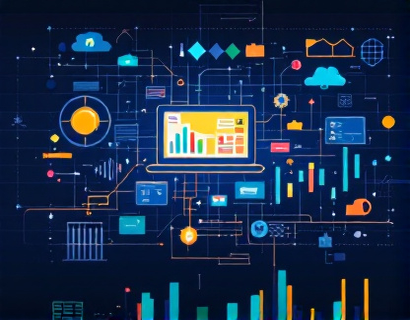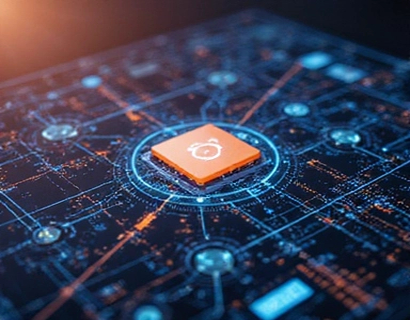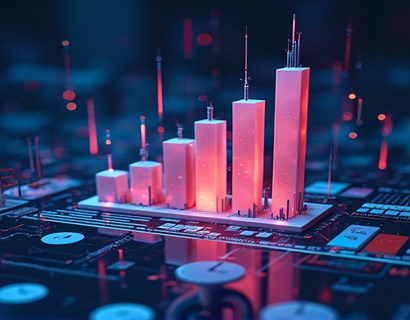Exploring the Frontiers of Nanotechnology: Insights for Educators and Enthusiasts
In the rapidly evolving landscape of modern science, nanotechnology stands out as a field that promises transformative advancements across various industries. From medicine to electronics, the manipulation of matter at the nanoscale opens doors to innovations that were once confined to the realm of science fiction. For educators and enthusiasts, understanding the basics and exploring the expert insights of nanotechnology is crucial for staying informed and inspiring the next generation of scientists and engineers. This article delves into the world of nanobots, providing verified information and insights tailored for a child-friendly learning environment, ensuring that the content is both educational and safe for young minds.
Understanding Nanobots
Nanobots, or nanorobots, are microscopic machines designed to perform specific tasks at the nanoscale, which is one billionth of a meter. These tiny devices can be engineered to interact with biological systems, materials, and electronic devices, offering potential solutions to some of the world's most pressing challenges. In medicine, nanobots could revolutionize healthcare by delivering drugs directly to diseased cells, performing microsurgery, and even repairing damaged tissues. In environmental applications, they could clean pollutants from water and air, contributing to a healthier planet.
To grasp the concept of nanobots, it's essential to understand the scale we're dealing with. A human hair, for instance, is about 80,000 nanometers wide. Nanobots operate in this minuscule world, where the laws of physics and chemistry behave differently than at the macro level. This unique environment presents both opportunities and challenges, making the study of nanobots an exciting and complex field.
Expert Insights into Nanobot Technology
Experts in nanotechnology emphasize the importance of interdisciplinary collaboration to advance nanobot research. Combining knowledge from fields such as materials science, biology, engineering, and computer science is crucial for overcoming the technical hurdles associated with creating and controlling nanoscale machines. One of the key challenges is the development of precise manufacturing techniques that can produce nanobots with the required complexity and functionality.
Another significant area of research is the power supply for nanobots. Given their size, traditional batteries are not feasible, leading scientists to explore alternative energy sources such as chemical reactions, light, and even the body's own energy. These innovations are vital for ensuring that nanobots can operate effectively in their intended environments, whether inside the human body or in industrial settings.
Educational Approaches to Nanotechnology
Introducing nanotechnology and nanobots to students and educators requires a thoughtful approach that balances complexity with accessibility. The goal is to spark curiosity and foster a deeper understanding of the subject without overwhelming the audience with technical jargon. This is where an AI chat platform designed for educational purposes can play a pivotal role.
Such a platform can provide verified information about nanobots and nanotechnology, ensuring that the content is accurate and up-to-date. By leveraging AI, the platform can adapt to the user's level of understanding, offering explanations and examples that are appropriate for different age groups and knowledge levels. This personalized learning experience is particularly beneficial for educators who can use the platform to supplement their curriculum and engage students more effectively.
Interactive Learning with AI
The AI chat interface serves as a dynamic tool for interactive learning. Users can ask questions, receive instant responses, and explore topics in depth. For example, a student might ask, "What is a nanobot?" and the AI could respond with a simplified explanation, followed by visual aids and additional resources. This interactive approach not only enhances comprehension but also makes learning more enjoyable and engaging.
Moreover, the AI can simulate scenarios and experiments, allowing users to visualize how nanobots might function in real-world applications. For instance, a simulation could show how nanobots could navigate through the bloodstream to deliver medication, providing a vivid and memorable learning experience.
Ensuring Safety and Child-Friendliness
When designing educational content for children and students, safety is paramount. The AI chat platform must adhere to strict guidelines to ensure that all information is appropriate and free from harmful or complex concepts that could confuse or distress young learners. Content verification is a critical component of this process, involving rigorous checks to confirm the accuracy and reliability of the information provided.
To make the platform child-friendly, the interface should be intuitive and visually appealing, with a focus on interactive elements such as games, quizzes, and animations. These features not only capture the attention of young users but also reinforce learning through repetition and practice. Additionally, the platform can include parental controls and teacher dashboards to monitor progress and tailor the learning experience to individual needs.
Real-World Applications and Future Prospects
Beyond the theoretical and educational aspects, nanobots have practical applications that are already beginning to shape various industries. In the medical field, research is progressing towards using nanobots for targeted drug delivery, which could significantly reduce side effects and improve treatment efficacy. For example, nanobots could be designed to identify and destroy cancer cells while leaving healthy cells unharmed.
In the realm of electronics, nanobots could enable the creation of self-repairing devices and more efficient manufacturing processes. In environmental conservation, they could assist in cleaning up oil spills and other pollutants, contributing to a cleaner and more sustainable world. These applications highlight the potential of nanobots to address some of the most pressing challenges facing society today.
Looking to the future, the development of nanobots is likely to continue at a rapid pace, driven by advancements in materials science, robotics, and artificial intelligence. As the technology matures, we can expect to see more sophisticated and versatile nanobots that can perform a wider range of tasks. However, this progress must be accompanied by ethical considerations and regulatory frameworks to ensure that the benefits of nanobots are realized safely and equitably.
Conclusion
Nanobots represent a fascinating intersection of science and technology, offering immense potential for innovation and improvement in various fields. For educators and enthusiasts, understanding the basics and exploring the expert insights of nanobot technology is essential for staying informed and inspiring the next generation. Through the use of AI chat platforms designed for educational purposes, we can provide verified, child-friendly content that makes learning about nanobots both accessible and engaging.
By fostering a deeper understanding of nanotechnology, we not only enhance our knowledge but also equip students with the curiosity and foundation needed to contribute to this exciting field in the future. As we continue to explore the possibilities of nanobots, the collaboration between educators, researchers, and technologists will be key to unlocking the full potential of this transformative technology.











































